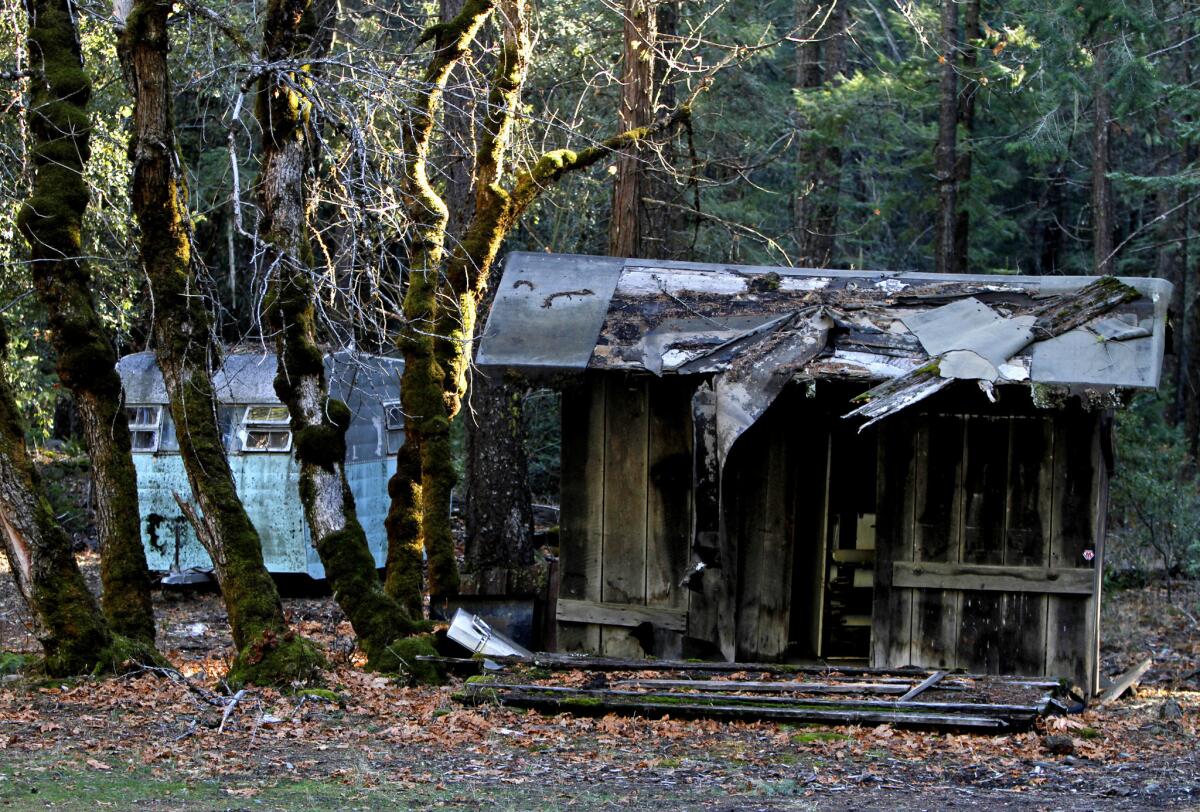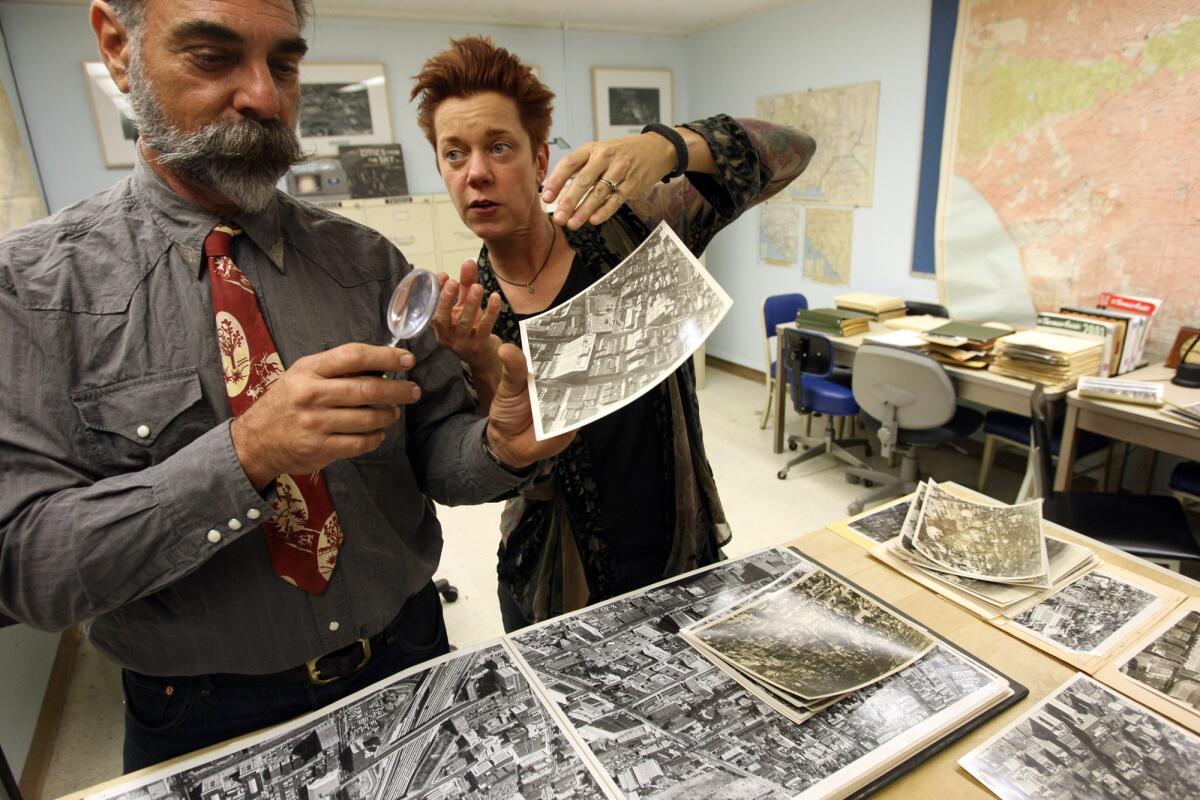Tiny museum in New York showcases everyday objects
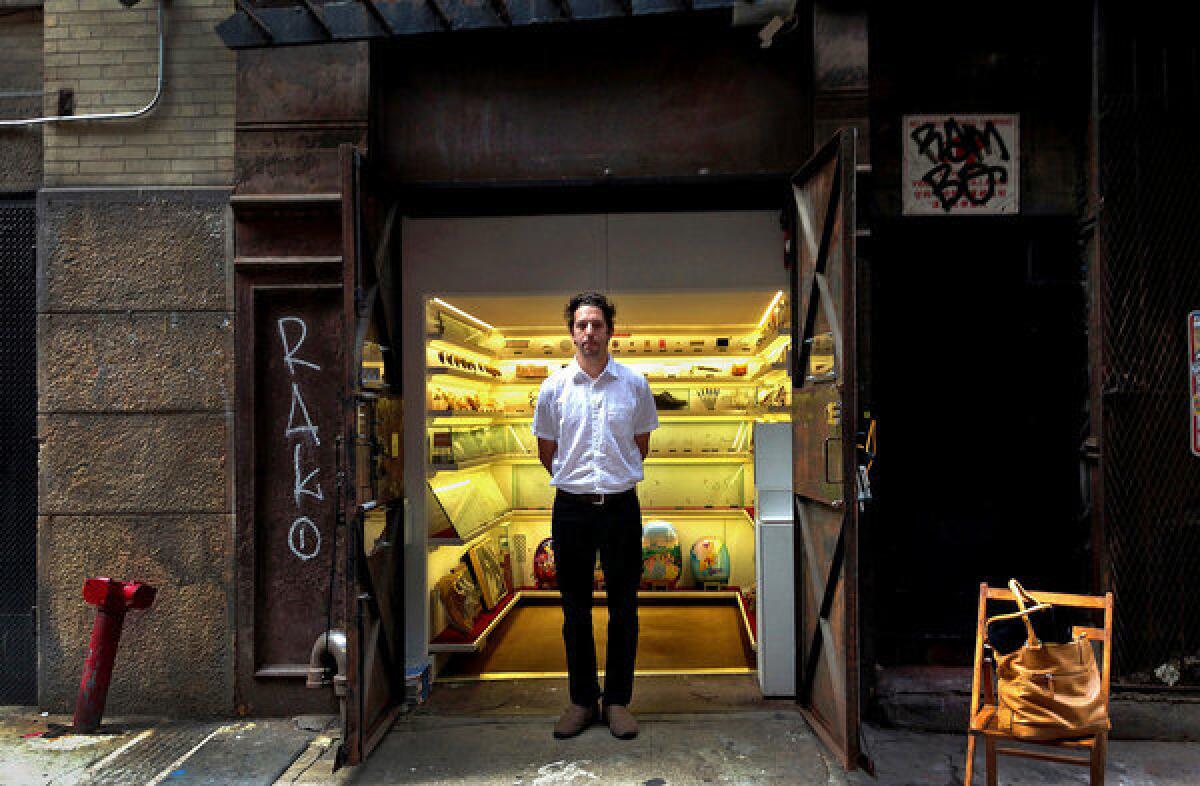
Go down an alley in Chinatown and you’ll find the Museum inside a refurbished elevator shaft. Watch out for the vomit; it’s art.
- Share via

New York's smallest museum has reached its capacity of three, and Nicholas Kokkinis, volunteer docent, feels obliged to amuse the waiting crowd.
He points to the museum cafe (a cappuccino machine mounted on the wall) and gift shop (postcards and pencils above the cafe), both tucked inside a 60-square-foot refurbished elevator shaft in a trash-strewn alley in Chinatown.
"In case you want to read a little bit more about our exhibit on fake vomit or our exhibition on potato chips bags from around the world, you can call the numbers on your exhibit on the phone," he says to the Japanese tourists, Brooklyn hipsters and young couples.
One visitor uses his iPhone to dial in and hear about the exhibit that lines the left wall of the museum, which includes the gold laminated sneakers of onetime porn magnate Al Goldstein. Chelsea Kasen, 24, steps back and takes a picture, making sure to include the graffiti-covered wall outside the museum.
"It's finding beauty in the unexpected," she said about the tiny space. "It looks like an abandoned alley, but in it is something you can learn from, which adds value to something that seems meaningless." (She was headed next to a club where stand-up comedians tell jokes to porcelain dolls.)
Part of New York's appeal is the eccentric things that pedestrians encounter: unicycling dog walkers, vegan drum circles, startling vistas of skyscrapers. Now there's this place, called simply Museum, which could fit in a closet at the Metropolitan Museum of Art and is accessible 24 hours a day.
Pedestrians often walk right past this museum, averting their eyes from the foam cups, candy wrappers and mysterious yellowish puddles that make this a typical New York alley.
During the week, its thick metal doors are closed, although visitors can see exhibits by peeking through three small windows. On the weekend, when it opens its doors, it's hard to miss. Bright light spills out, luring people to stop and peek at the walls lined with pristine shelves neatly displaying the museum's eclectic collection. Admission is free, though donations are encouraged.
The founders of Museum say their project is not meant to be quirky; their goal is to celebrate the beauty of everyday objects and the stories behind them. Part of the collection is permanent, including, they say, the shoe thrown at George W. Bush in 2008 during his visit to Iraq. Other pieces in the museum rotate because they belong to other people, including a collection of tip jars, photos of food that had been rejected from a menu in Cambodia, and the potato chip bags from around the world.
The lingering crowd on this Saturday catches the notice of James Francis Ginty, who had been aimlessly wandering the city. Ginty, who appeared in the submarine thriller "K-19: The Widowmaker" alongside Harrison Ford, thought he might be able to sneak in on a tour — of what, he did not know. When he learns the crowd is waiting to get into New York's smallest museum, an oddity in a city of oddities, he is impressed.
"This is what makes New York New York," Ginty says, peeking at the displays. "I've walked down this alley a bunch of times, but I've never seen this, never known it was here."
We are living in a new age of wonder."— Joshua Foer, co-creator of Atlas Obscura
Just a year old, Museum has become so popular that its founders are hoping to expand next year — into another elevator shaft. The tiny salon has been blogged about by the musician David Byrne, featured in Time Out New York and even praised by Paola Antonelli, a senior curator in the architecture and design department at New York's Museum of Modern Art.
Antonelli said she saw Museum as a cousin to MoMA.
"Museum embodies the dream of the way I would like people to think about design," she said. High praise for a museum that's so easy to miss that a man was urinating near its doorstep on a recent weekday, not knowing he was a few feet from a cultural establishment.
Museum's popularity may capture something distinct about the American psyche at this moment: Because of the Internet, the bizarre and unique are more popular than ever, and quirky experiences that can be highlighted on Facebook are at a premium. Travel sites offer offbeat experiences like circus training, websites like Atlas Obscura direct the curious to unusual destinations and, at least in New York, people take classes about doomsday cults and weird spices.
"We are living in a new age of wonder," said Joshua Foer, one of the creators of Atlas Obscura. "The last great age of wonder was precipitated by the discovery that there was a whole lot more to the world than Europe. There's a way in which the Internet is now doing that again."
Explorers of generations past may have stumbled across America; today's explorers must settle for "Inner Gastronomic Offerings," a display of vomit — fake, thankfully. Call the phone line to find out about one piece, "Wendy's Went Wrong," and a highbrow British voice will explain: "Solid Midwest foundations contribute to the effectiveness of this piece. Swirling muted forms, subtly combined with strong sienna tones, call out to our carnivorous tendencies."
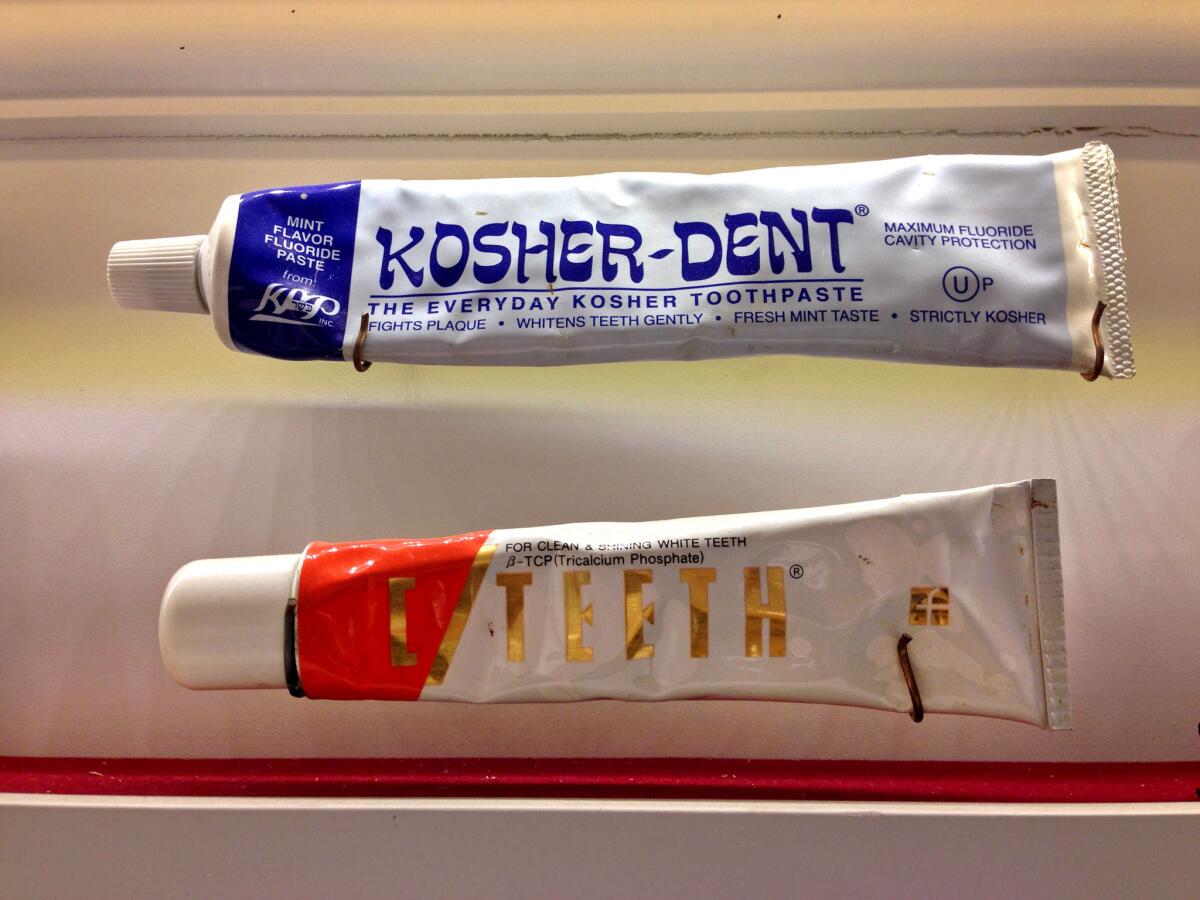
A display of toothpaste tubes. The founders of Museum say their project is not meant to be quirky; their goal is to celebrate the beauty of everyday objects and the stories behind them. More photos
Everyday objects are often overlooked but tell a lot about us, said Alex Kalman, one of Museum's founders. (His father, artist Tibor Kalman, used to collect onion rings.) A display of shiny bulletproof Disney-themed backpacks featuring Winnie the Pooh and various princesses intrigues Kalman because two American companies have found a market for them.
"We believe that you can learn a lot about the world by reading newspapers, but you can also approach society from the other extreme: the smallest elements of society, the most basic things, and how they reveal what we're going through," he said. "Even if you don't understand what it means that America defaults on its loans, you can still approach America through something like Disney-themed children's bulletproof backpacks."
Kalman founded the museum with brothers Josh and Benny Safdie; the three run Red Bucket Films from a studio above Museum. Their films have focused on the world around them — the Safdie brothers are working on a movie about New York's diamond district — and the men started collecting objects during their filmmaking.
They fantasized about opening a museum to showcase their found objects. Then one day, their landlord called and asked whether they wanted extra storage space. Managers in the building had removed a defunct freight elevator and were installing a ceiling, walls and doors in the shaft. When the trio saw the space, they knew it was perfect.
"We said, yes, we do need a storage space, but we want to store our things nicely, and we want to invite people to come see what we store," Kalman said. "We wanted it to be that when you came here you felt as though you were going to see the queen's jewels."
During the grand opening, a Rudolph Giuliani impersonator participated in a ribbon-cutting ceremony. Bands performed out of cars that rotated in and out of the alley.
For months, most of the visitors were people who wandered over to ask docent Natalie Guevara why she was sitting on a folding chair in an alley. One person sat on the floor for five hours, listening over the phone to the descriptions of every object.
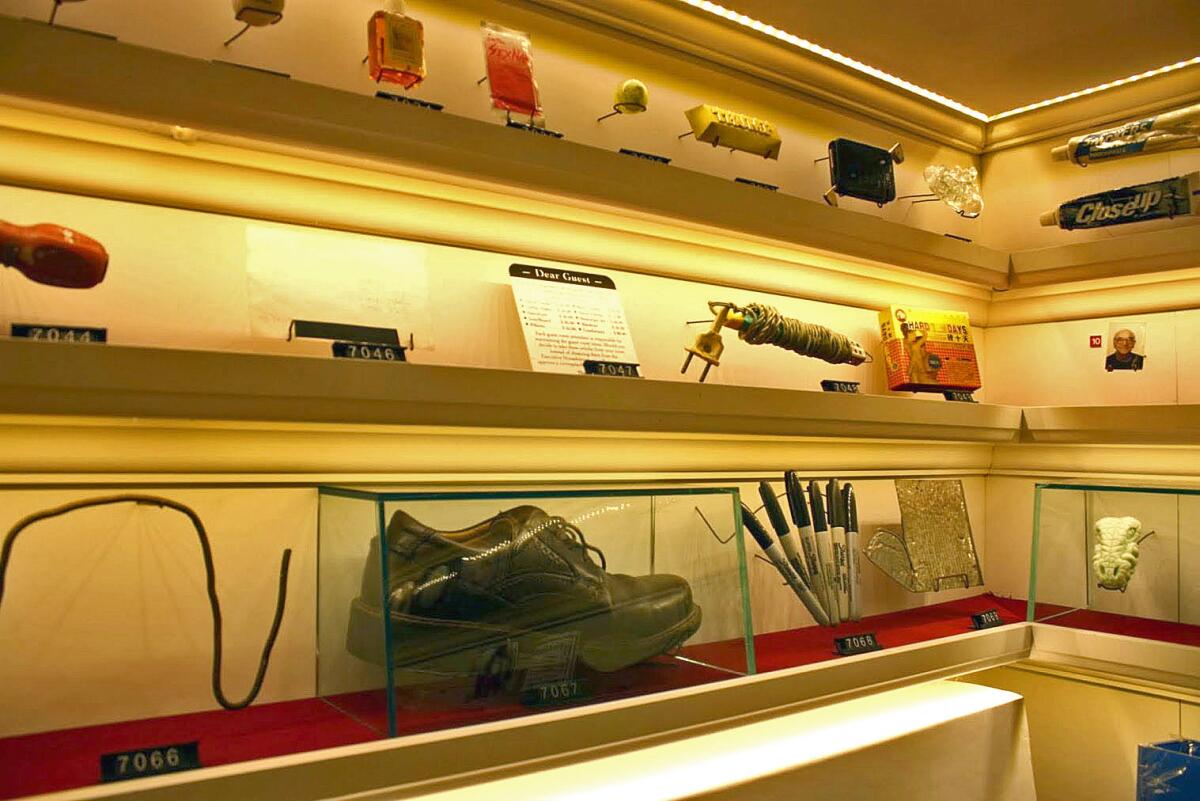
Museum includes the shoe thrown at former President George W. Bush by an Iraqi journalist. "It's just a shoe..., but at the same time this has immense historical and cultural significance," Kalman said. More photos
"Over time, it really became a destination," said Guevara, a 27-year-old volunteer.
Sometimes there is a line to get in. Other times, Guevara closes up shop and walks away, and then loops back to see people peering in the windows, their faces illuminated by the light inside. She says she gets energized from watching people find joy in the wonder of Museum.
Preston Brown, 39, stopped by recently. He works at New York's American Museum of Natural History, which he said could learn a bit from Museum.
"There's oftentimes big, huge spaces in my museum that aren't used at all — and you see something as small as this being used so well, it makes me annoyed we're not doing things like this," he said. His head, clad in a Yankees cap, nearly touched Museum's 6-foot-tall ceiling.
The collections may be less valuable than those found at famous museums, but that doesn't mean the objects are any less important, said Kevin Ng, 40, a first-time visitor who lives in Chinatown.
"New York as a city is a melting pot, with a whole microcosm of cultures from around the world," he said. "This museum is the same type of theme, a small slice of all the different cultures and different things the world has to offer."
Follow Alana Semuels(@AlanaSemuels) on Twitter
Sign up for Essential California
The most important California stories and recommendations in your inbox every morning.
You may occasionally receive promotional content from the Los Angeles Times.
